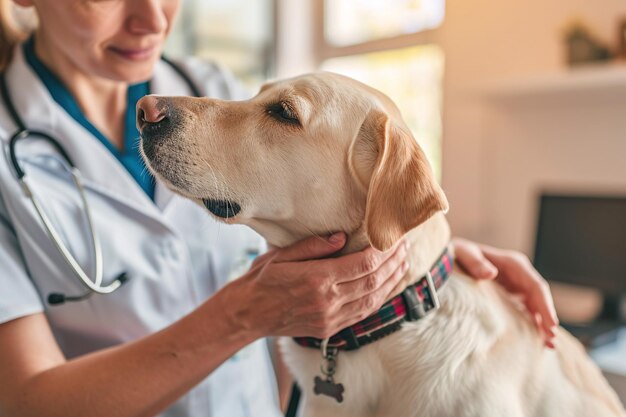As a dog owner, you know your pet better than anyone. But unlike humans, dogs can’t tell you when they’re feeling sick or in pain. They often hide discomfort as a survival instinct, which is why it’s crucial to recognize subtle changes in their behavior, appearance, or habits. Catching early signs of illness can mean faster recovery, lower vet bills, and even saving your dog’s life.
In this guide, we’ll cover the most important signs that indicate it’s time to schedule a vet visit.
1. Changes in Appetite or Thirst
- Loss of appetite for more than 24 hours can signal digestive issues, dental pain, or systemic illness.
- Increased thirst may indicate diabetes, kidney disease, or infections.
Tip: Monitor your dog’s eating and drinking patterns closely. Sudden changes are red flags.
2. Vomiting or Diarrhea
Occasional mild vomiting or loose stool can happen from eating something unusual. But persistent vomiting, diarrhea, or either combined with lethargy or blood should never be ignored.
- Repeated vomiting
- Bloody stool
- Dehydration
- Weakness or collapse
These signs require immediate veterinary attention.
3. Lethargy or Low Energy
Every dog has lazy days, but if your normally active pup becomes sluggish or uninterested in play, walks, or food, it could point to pain, infection, or internal issues.
Especially concerning when:
- Lasts more than 24 hours
- Accompanied by other symptoms
- Follows a recent injury or vaccination
4. Coughing, Wheezing, or Labored Breathing
Respiratory issues are serious and often urgent. Watch for:
- Persistent coughing
- Noisy breathing
- Gagging or choking
- Blue-tinted gums or tongue
- Heavy breathing when resting
These could indicate kennel cough, pneumonia, heart disease, or foreign object obstruction.
5. Sudden Weight Loss or Gain
Rapid weight changes—without diet adjustment—could be a sign of thyroid issues, diabetes, cancer, or parasites. Weigh your dog monthly and consult your vet if you notice a 10% change in body weight.
6. Skin Issues or Excessive Scratching
Constant licking, scratching, or biting may point to:
- Allergies
- Fleas or ticks
- Hot spots
- Skin infections
- Autoimmune disorders
Also look for redness, rashes, scabs, or bald patches.
7. Limping or Mobility Problems
If your dog starts limping, avoiding stairs, or struggling to get up, it could indicate:
- Joint pain
- Arthritis
- Sprains or fractures
- Hip dysplasia
Chronic pain should be managed with a vet’s help to preserve mobility and quality of life.
8. Eye or Ear Abnormalities
Eye signs:
- Redness
- Cloudiness
- Discharge
- Squinting or pawing at the eyes
Ear signs:
- Odor
- Discharge
- Head shaking
- Sensitivity to touch
Eye and ear infections can worsen quickly if left untreated.
9. Unusual Behavior or Personality Changes
You know your dog’s normal behavior best. Sudden changes can be emotional or medical in nature:
- Increased aggression or irritability
- Excessive hiding or clinginess
- Whining without cause
- Confusion or disorientation
Behavioral changes often reflect discomfort or neurological issues.
10. Bathroom Habit Changes
Monitor how often and how easily your dog urinates or defecates. Concerning signs include:
- Difficulty urinating
- Straining during bowel movements
- House accidents in trained dogs
- Blood in urine or stool
- Frequent urination
These may be signs of urinary tract infections, kidney stones, or gastrointestinal problems.
11. Bad Breath or Dental Issues
While dog breath isn’t always fresh, foul odor can signal dental disease or internal issues. Also look for:
- Drooling
- Swollen gums
- Broken or missing teeth
- Trouble eating or chewing
Dental problems affect more than the mouth—they can lead to infections that impact the heart and kidneys.
12. Seizures or Collapse
Any unexplained collapse, seizure, or fainting episode is a medical emergency. Causes may include epilepsy, poisoning, or serious heart conditions.
When in Doubt, Call the Vet
If you’re ever unsure, it’s better to be safe than sorry. Your vet can offer guidance over the phone and help determine whether an in-person visit is necessary.
How to Prepare for a Vet Visit
- Write down symptoms and when they started.
- Bring a stool sample if possible.
- Take photos or videos of abnormal behavior.
- Pack any medications or supplements your dog takes.
This helps the vet diagnose your dog more accurately.
Practical Tips: Trust Your Instincts
Your dog can’t speak, but they communicate through behavior and body language. By staying alert to changes and trusting your instincts, you become your dog’s first line of defense. Early detection and timely vet visits can make all the difference.
